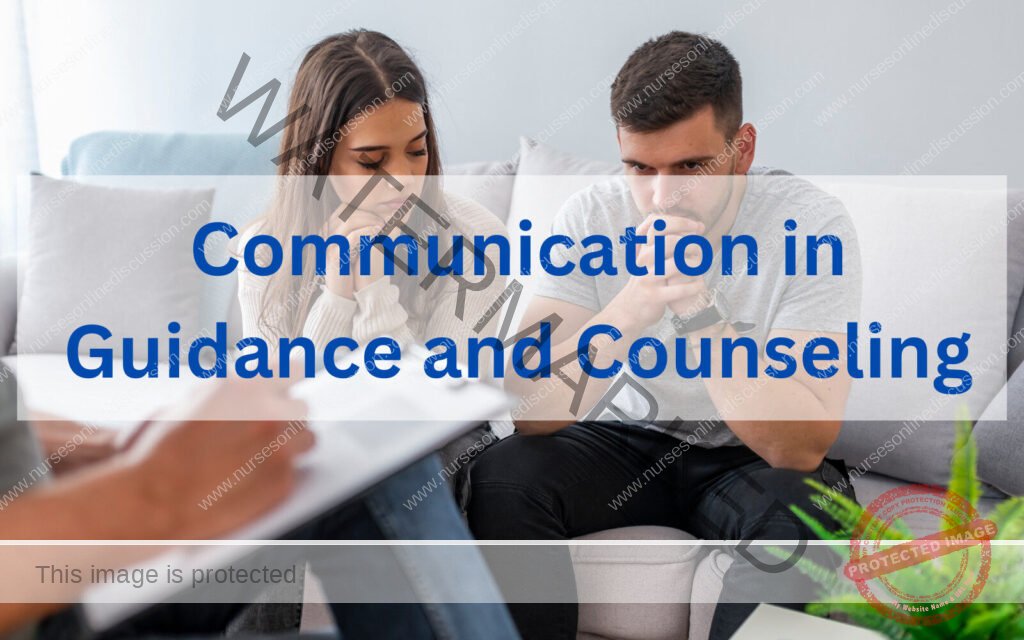Guidance and Counseling
Subtopic:
Communication in Guidance and Counseling

- Communication skills as applied to counselling and guidance.
- It is when 2 or more people exchange messages using verbal and nonverbal language.
- Communication happens between 2 or more people who want to share information, ideas, thoughts, feelings, etc. and get other person’s feedback.
- Communication is when a person sends a message to another person with the hope and desire of receiving a response though an appropriate channel.
- Therefore, communication id a key to every aspect of our lives and plays an important role in building and strengthening our relationships with people.
- The way a person communicates with others will affect how the other persons react: Aggressive communication triggers aggressive/defensive response; Assertive behaviour is important; Use the 4 basic communication skills to make your messages effective.
- Verbal and nonverbal communication
- Every face-to-face communication involves verbal and nonverbal messages.
- Usually these messages are matching.
- Communication problems arise when verbal and nonverbal messages contradict.
- Nonverbal communication includes facial expressions, hands, posture, eyes, etc..
- Contradictory nonverbal signals can indicate dishonesty.
- Pay attention to both verbal and nonverbal messages and ask direct questions.
- Examples of verbal messages with associated feelings (Smile=Happy, Frown=Unhappy, etc.).
- Nonverbal Communication Associated feeling (Eye contact=Serious, Nodding=Understanding, etc.).
- Communication skills:
- Complement interpersonal skills and refer to techniques to transfer meaning.
- Refers to a two-way dialogue between health worker and patient aimed at identifying needs and providing information.
- For health providers to communicate effectively they need the skills of: Listening, Checking understanding, Asking questions, Answering questions.
- 1. Listening Skills. In order to listen attentively, a health care provider should: R-Relax, O- Being Open, L-Leaning forward, E-Eye contact, S-Sit/ Stand close to the client.
Techniques of effective listening.
- Techniqnique1: Clarifying: Seeking clearer information to understand better. Purpose: Get facts, explain sides, understand more, help personalize. Examples: “Can you clarify this…?”.
- Techniqnique2: Restate: Hear and use same words back. Purpose: Check interpretation, analyse other aspects, show understanding, follow story, appreciate emotions. Examples: “As I understand it…”.
- Technique 3: Neutral: Standing in the middle for objective understanding. Purpose: Show listening and interest, encourage talking. Examples: “I see”, “Uh huh”.
- Technique 4: Reflective: Thinking and showing relevant feelings to client’s emotions. Purpose: Show understanding of feelings, help client evaluate feelings. Examples: “So it is a shocking thing…”.
- Technique 5: Summarizing: Picking main issues relevant to the problem, prioritizing. Purpose: Wrap up and focus discussion. Examples: “These are the key ideas…”.
- The Do’s and Don’ts in listening: Do’s: Show interest, be understanding, listen for cause, encourage problem solving, know when to be silent. Don’ts: Don’t argue, interrupt, pass judgment quickly, give advice unless asked, jump to conclusions.
- Tips on active listening: Stop talking, remove distractions, concentrate, look interested (eye contact), check understanding (repeat, summarize), use probing questions, be patient, be non-judgemental.
- 2. Checking understanding. Examples: “If I heard correctly…”, “What you seem to be saying…”, etc.. Only check if content unclear or important to summarize.
- 3. Asking questions. Meant to get more information, clarify, confirm. Types of questions: Open ended questions (invite patient to talk more). Serve the purpose of giving patients opportunity to express, help identify needs/priorities, start dialogue/explore concerns, facilitate nondirective approach for behavioral change.
Get in Touch
(+256) 790 036 252
(+256) 748 324 644
Info@nursesonlinediscussion.com
Kampala ,Uganda
© 2025 Nurses online discussion. All Rights Reserved Design & Developed by Opensigma.co
×

